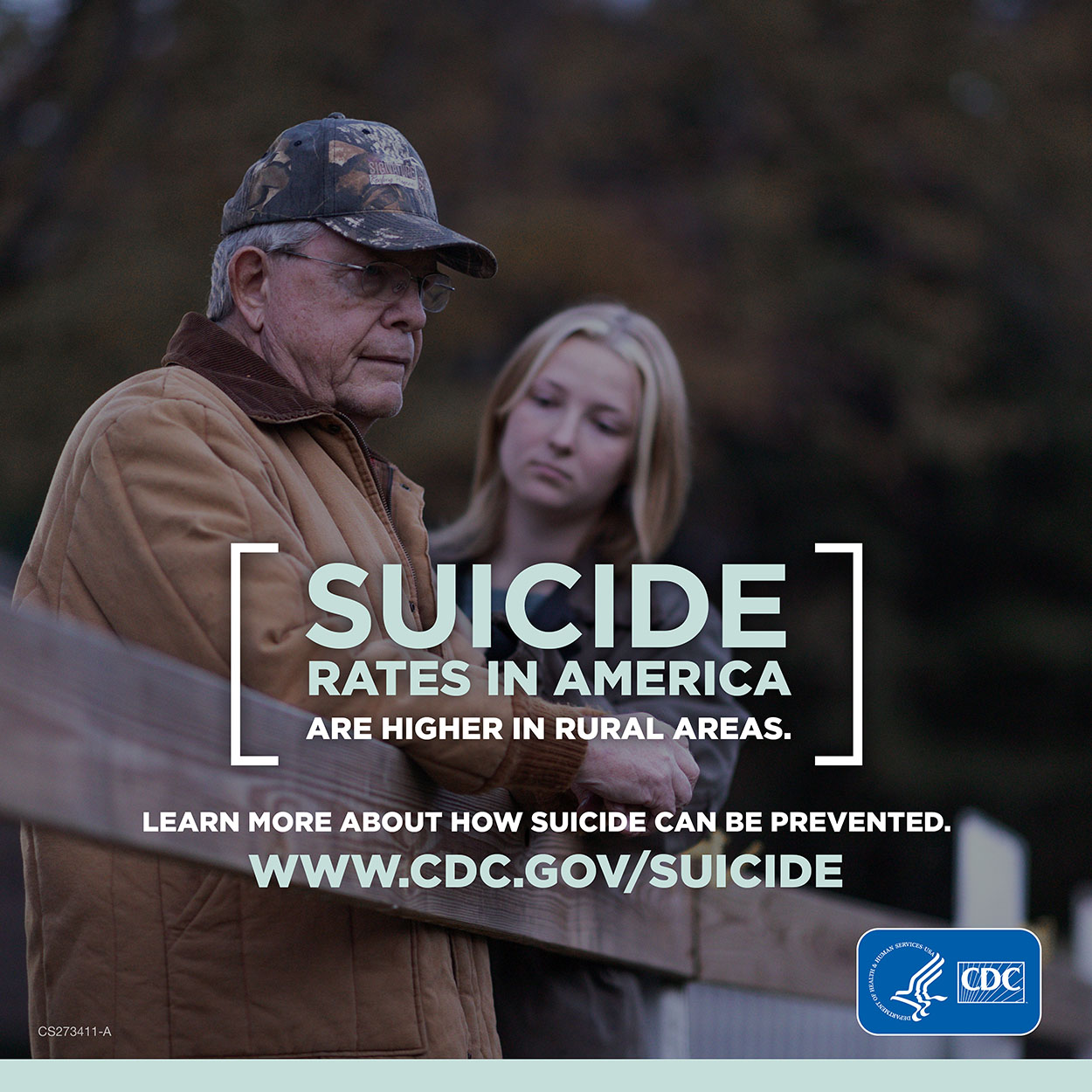Key points
- Rural residents are at a higher risk for suicide than urban residents.
- Suicide rates almost doubled between 2000-2020 in rural areas.
- Sources to help explain prevention strategies are listed below.

Overview
Suicide is a leading cause of death in the United States. Suicide was responsible for over 48,000 deaths in 2021, which is approximately one suicide every 11 minutes.1
In the past two decades, suicide rates have been consistently higher in rural America than in urban America. Between 2000-2020, suicide rates increased 46% in non-metro areas compared to 27.3% in metro areas. White non-Hispanic people have the highest suicide rates in urban areas (metropolitan counties) while non-Hispanic American Indian and Alaska Native people have the highest rates in rural areas. Moreover, rural residents have 1.5 times higher rate of emergency department visits for nonfatal self-harm than urban residents.
Many factors contribute to suicide risk.
Suicide is preventable through a comprehensive public health approach that relies on multiple strategies with the best available evidence to address the many factors associated with suicide.

Resources
- What the Science Says - CDC MMWR Report
- Suicide Policy Brief
- Trends in Suicide by Urbanization - CDC MMWR Commentary
- Strategies for Preventing Suicide - Suicide Prevention Resource for Action
- Suicide Prevention Resources - More information from CDC

Watch this webinar
- Centers for Disease Control and Prevention, National Center for Health Statistics. National Vital Statistics System, Mortality 2018-2021 on CDC WONDER Online Database, released in 2023. Data are from the Multiple Cause of Death Files, 2018-2021, as compiled from data provided by the 57 vital statistics jurisdictions through the Vital Statistics Cooperative Program. Accessed at http://wonder.cdc.gov/mcd-icd10-expanded.html on Jan 11, 2023
